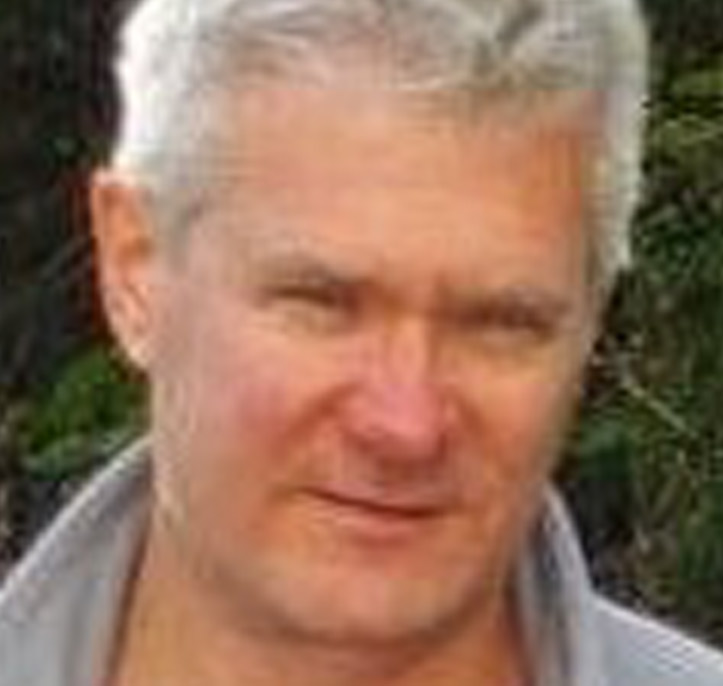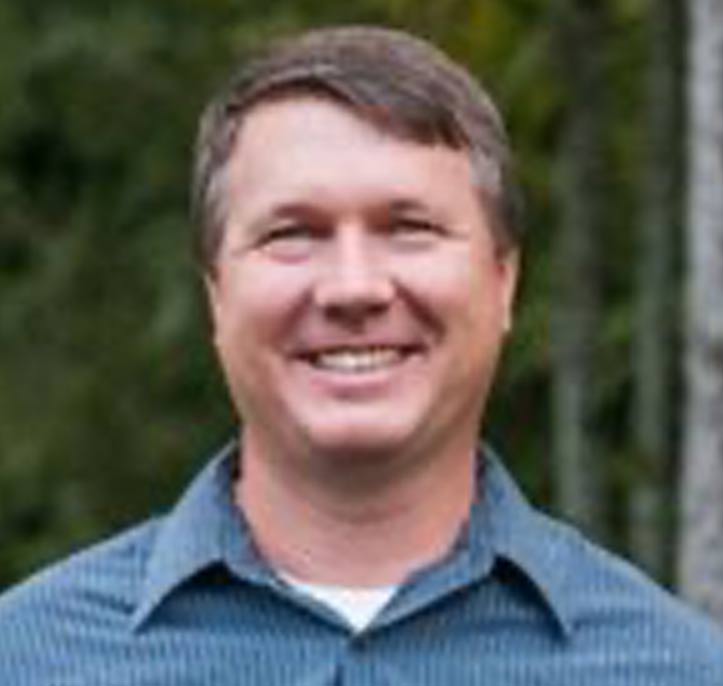2013 SMART Calgary
April 4, 2013
SMART Remediation talks have focused on innovative technologies for remediating contaminated sites, approaches for site characterization, project case studies, regulatory and industry perspectives, and other related topics.

The 9th SMART Remediation conference was held in Calgary on Thursday, April 4th, 2013. Details on the speakers and presentations are provided below.
Speakers

Perry D. Gerwing, B.S.A., M.Sc.,
Earthmaster Environmental Strategies Inc.
Phytoremediation of Salt and Petroleum Hydrocarbon Impacted Soil
- Bio |
- Abstract
- | Presentation
Perry D. Gerwing, B.S.A., M.Sc.
Perry D. Gerwing, B.S.A., M.Sc., is a specialist in reclamation and contaminated site assessment and remediation. He has worked as an environmental specialist for large oil and gas corporations and environmental consulting firms for over 25 years. He has co‐authored and published many scientific papers and as President of Earthmaster Environmental Strategies Inc., an environmental consulting firm, has spent a number of years developing and implementing successful phytoremediation programs for clients.
Phytoremediation of Salt and Petroleum Hydrocarbon Impacted Soil
Based on extensive chemical and biological research, we have successfully developed and implemented plant growth promoting rhizobacteria (PGPR) enhanced phytoremediation systems (PEPS). The scientifically advanced phytoremediation systems we deploy remove petroleum hydrocarbons (PHCs) and salt from soils. PEPS provide large amounts of root biomass in impacted soils, which promotes growth of rhizosphere microorganisms. The root and rhizosphere biomass allow rapid partitioning of contaminants out of the soil, and their subsequent uptake and/or metabolism by microbes and plants. This results in degradation of PHCs in soil and large amounts of biomass for sequestration of salt into plant foliage. We have deployed PEPS at over 35 full‐scale sites in Canada. PEPS, when deployed by our trained scientists, will result in PHC and salt remediation to Tier 1 standards. Not only is this a green solution for remediation of impacted sites, but the costs for PEPS are less than half the costs associated with landfill disposal. Between 2007 and 2012 we have deployed PEPS at more than 25 PHC impacted sites in Alberta, British Columbia, Ontario, Manitoba, the Northwest Territories and Quebec. At all sites we achieved ~ 35 % remediation per year of PHC from soil (mostly F2, F3 and F4). The first 7 sites treated have met Tier 1 standards while 18 other sites are being treated and are on target to reach remedial endpoints within an overall 2 to 3 year treatment period. Beginning in 2009, we initiated full scale deployments of PEPS at 13 salt impacted sites in Saskatchewan, Alberta, Manitoba and the Northwest Territories. PGPR greatly enhanced plant growth on the salt impacted soils, allowing excellent plant growth with soil ECe’s up to 25 dS/cm. Furthermore, the plants (both grasses and cereals) take up sufficient amounts of salt to result in 10 to 20 % remediation per year. Importantly, we have already achieved salt remediation to regulatory targets at 2 of the sites. We have an on‐going research program to improve PEPS. One aspect of this work is to properly maintain the PGPR currently utilized and to isolate new, more active PGPR. We are refining the CCME PHC analytical method to make phytoremediation and other green in situ remediation technologies more efficient. We are also using Tier 2 toxicity end points at a research level to assess when soil becomes non‐toxic during PEPS treatment – results indicate this will occur prior to meeting Tier 1 criteria. Our work with PEPS has shown that it is very effective for treatment of a wide variety of PHC and salt impacted sites (including sites with co‐contaminants).

Jean Paré,
Chemco inc.
Jean Paré
Jean Pare, P.Eng., has a degree in Chemical Engineering from Laval University. He has been involved for the last 22 years in the evaluation, development, design, and promotion of both conventional and innovative environmental technologies. As Vice President with Chemco Inc., his responsibilities include the remediation design, technico-economical analysis and technology supply for chemical oxidation and reduction, soil washing, and enhanced bio-remediation. Last year, he worked with over 400 sites applying his expertise to various types of organic and inorganic contaminants in soil and groundwater. He is also involved with many environmental organizations such as CLRA, CBN, ESAA, BCEIA and Reseau-Environnement where he is an active technical committee member and regular technical speaker.
Chemical Reduction for In Situ Soluble Metals Remediation
As our society is aiming for a more sustainable lifestyle in respect of a balance between environmental, social and economic factors, the use of efficient and environmentally friendly remediation technologies is now required by the environmental industry including landlords, governments, engineering firms,contractors and suppliers. This is changing the ways we are approaching and developing intervention strategies for contaminated site remediation and rehabilitation. In Situ and Ex Situ technologies are commonly used for the remediation of organic and inorganic contaminants in soil and groundwater. These technologies are well established and recognized by the specialized environmental firms and the different levels of governments. This presentation allows to review and better understand the theory, principles and applicability of Chemical Reduction for the remediation of a wide range of contaminants such as chlorinated solvents (ethanes, ethenes, methanes, perchlorate, etc.); organochlorine pesticides and herbicides; energetic compounds (TNT, RDX, etc.); phenolic compounds (PCP, PAHs) and some petroleum hydrocarbons; and dissolved metals. The presentation will also cover the various ways to establish reductive conditions in the soil and/or groundwater through the use of both organic and inorganic amendments. Laboratory data and field case studies will be presented to better understand where and how these remediation technologies canbe successfully applied.

Gordon H. Bures,
Frac Rite Environmental Ltd.
Using Environmental Fracturing To Achieve Sustainable Remediation In Difficult Lithologies
- Bio |
- Abstract
- | Presentation
Gordon H. Bures
Gordon Bures is a professional engineer, co-founder and Principal at Frac Rite Environmental Ltd. based in Calgary, Alberta, Canada. He earned a Bachelor of Science Degree in Geological Engineering at the University of Manitoba in 1985, and a Master of Environmental Engineering Degree at the University of Alberta in 1993. Gordon is a seasoned practitioner with 25 years experience in the in situ design and implementation of remediation systems at contaminated industrial, commercial, and municipal sites across Canada, the USA, Europe, Asia, and Africa. For the past fifteen years, he helped develop and commercialize in situ remediation technologies and is a co-patent holder of the BIO FRAC™ process with industry colleagues. His current focus is on business development and the implementation of advanced in situ remediation technologies across Canada, the U.S.A, and overseas markets.
Using Environmental Fracturing To Achieve Sustainable Remediation In Difficult Lithologies
The effectiveness of commonly used in situ approaches to site remediation in North America, and indeed much of the world, can be seriously undermined by a site’s inherent lithology. As a result, site remediation practitioners around the world are increasingly turning to environmental fracturing as a means of increasing contaminant recovery rates or emplacing significant masses of treatment amendments into affected soils and bedrock. This presentation provides an overview of how environmental fracturing technologies overcomes the limitations of in situ remediation in low permeability lithologies, and provides practitioners with a guide to the application of environmental fracturing, based on 17 years of project experience in jurisdictions ranging from across North America to Europe, Africa, and Asia. Two innovative case studies are presented to showcase the integrated and synergistic use of innovative fracture-enhancement techniques for attaining sustainable and cost-effective remediation for petroleum hydrocarbons and chlorinated solvents. Physical, biological and chemical (reductive and oxidative) treatment technologies are showcased in the context of both subsurface extraction and delivery techniques to optimize contact with contaminants for their conversion to innocuous and natural end products. Examples of remediation technologies in challenging geologic settings and operationally constrained sites are provided to showcase their versatility and small site profile. Complimentary remedial verification tools are introduced to validate and confirm the effective treatment of subsurface soil and groundwater contaminants to achieve remedial goals. The implications of the application of environmental fracturing within the remediation industry are assessed in the context of cost benefits for site owners, efficacy gains for owners’ engineers, and enhancing environmental sustainability for communities.

Joe Ricker,
EarthCon Consultants
Joe Ricker
For more than 24 years, Mr. Ricker has helped clients optimize a wide range of remediation solutions associated with past and present environmental liabilities under various regulatory programs in more than 30 states, as well as multiple remediation sites in Canada and Brazil. He brings a unique perspective to complex interdisciplinary projects and has managed remedial investigation and design projects involving a wide range of chemicals including petroleum hydrocarbons, pesticides, herbicides, wood-treating chemicals, solvents, and PCBs in soils, sediment, groundwater and air. Mr. Ricker is a licensed Professional Engineer in 24 states. He received a B.S. in Civil Engineering from Rose-Hulman Institute of Technology and a M.S. in Civil Engineering from the University of Memphis.
Innovative Plume Stability Analysis And Remediation System Benefit Analysis (RSBA)
Evaluating the relative stability of a groundwater contaminant plume is generating increasing attention as many state regulatory agencies, EPA and private stakeholders are realizing the applicability of plume stability as part of the environmental evaluation and/or remedial planning process of a site. Specifically, a plume stability evaluation will allow the stakeholder to assess whether a contaminant plume is stable, decreasing or increasing in size. Assessing the stability of a plume will allow the stakeholder to evaluate whether additional remedial action is necessary or whether risk-based closure of a site may be applicable or whether MNA is occurring at a site. There are many other ancillary applications of plume stability evaluations as related to groundwater contamination. This session presents the Ricker Method for plume stability analysis, which entails the use of innovative techniques to calculate and assess historical trends in contaminant plume area, average concentration, contaminant mass, and center of mass. This session will also present certain aspects of a proprietary analysis tool called Remediation System Benefit Analysis (RSBA). RSBA is an interpretation of the relative benefit of a remediation system based on graphical data outputs created from the Ricker Method of evaluating plume stability and additional data inputs. In effect, what RSBA does is evaluate the efficiency of an active groundwater remediation system that removes contaminant mass from groundwater (e.g., pump and treat). The tool evaluates whether an active system may be considered efficient or inefficient based on an evaluation of contaminant mass removed via the system and the relative stability of a groundwater plume. The Ricker Method for plume stability analysis was published in Groundwater Monitoring & Remediation (28, no. 4/ Fall 2008/pages 85–94) and has been used at numerous contaminated sites to effectively demonstrate the stability of contaminant plumes comprised of chlorinated solvents, carbon tetrachloride, pentachlorophenol (PCP), creosote, naphthalene, benzene, nickel and sodium, among others.

John Davis,
Gibson Energy Inc.
John Davis
Gibson Energy is a Growth-Focused North American Midstream Oil and Gas company. Since 1953 Gibson Energy has played a significant role in linking upstream producers with downstream refiners. At Gibson Energy, Health, Safety, Security & Environment are core business competencies and we are proud of our expertise in these areas.
Remediation Selection Process – An Industry Perspective
The purpose of this presentation is to share how corporate governance programs influence the selection of remediation/ risk management approaches for impacted sites. Using rural and urban sites as examples, the presentation will highlight how the company’s core values, social responsibility program, sustainability program, and regional business plans influenced the decision to implement specific remediation approaches.

Bruce Tunnicliffe,
Vertex Environmental Inc.
Using High Resolution Characterization for Detailed Real-Time Assessment of LNAPL and Dissolved Phase Petroleum Hydrocarbons
- Bio |
- Abstract
- | Presentation
Bruce Tunnicliffe
Mr. Tunnicliffe is President of Vertex Environmental Inc., and is an Environmental Engineer with years of experience designing and implementing remediation of chlorinated solvents and petroleum hydrocarbons. Having worked on many hundreds of in-situ projects, Mr. Tunnicliffe has extensive experience on innovated assessment tools and in-situ remediation techniques. Mr. Tunnicliffe holds a Master’s degree from the University of Waterloo, has authored many publications, and has presented at numerous conferences.
Using High Resolution Characterization for Detailed Real-Time Assessment of LNAPL and Dissolved Phase Petroleum Hydrocarbons
A common problem with remediation of petroleum hydrocarbons (PHCs) is a lack of understanding of subsurface distribution. Basic information is obtained using traditional boreholes and monitoring wells, but significant data gaps typically remain prior to commencement of remediation. Two new high resolution characterization techniques have been successfully used to define the location of PHCs in-situ, these are the Membrane Interface Probe (MIP) for dissolved phase contamination, and Laser-induced fluorescence (LIF) for free phase contamination (LNAPL – light non aqueous phase liquid). The MIP and LIF are powerful down-hole assessment tools that are used to provide semi-quantitative data on subsurface contamination. Advanced to depth by direct push methods, the surface of the MIP probe is then heated and the volatile contaminants volatilize and diffuse through a semi-permeable membrane and are subsequently transported to the surface for analysis. The LIF consists of a probe with a fibre optic cable that emits light through a window in the probe during direct push advancement. The PHCs in LNAPL fluoresce and the response is measured by the probe in real time. These real time, high resolution technologies provides very detailed information about the presence and extent of PHC impacts. During this talk, each technology will be briefly discussed, and a case study will be presented where both the MIP and the LIF were used prior to and during in-situ remediation of PHCs. This talk will present the pre-injection MIP and LIF results and showcase how the initial chemical oxidation design was altered based upon the MIP and LIF results. The MIP and LIF were remobilized to the Site during the in-situ program, these results will also be presented to show how the results were used to alter the design which resulted in efficient distribution of the oxidant and good destruction of the PHCs.